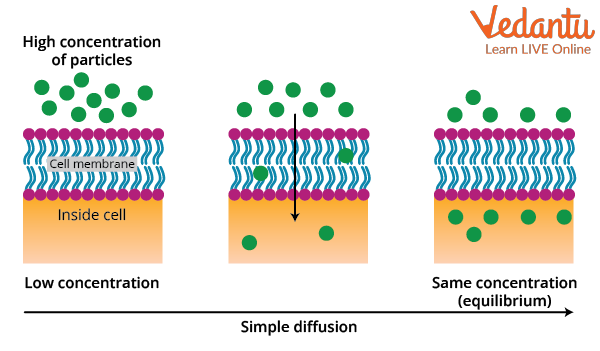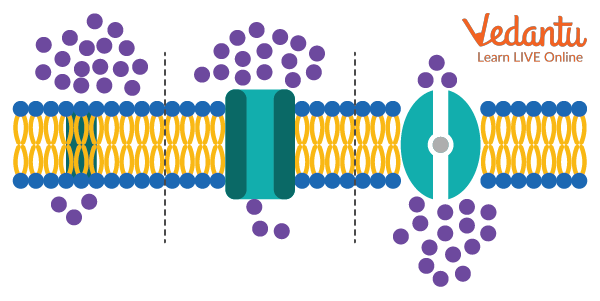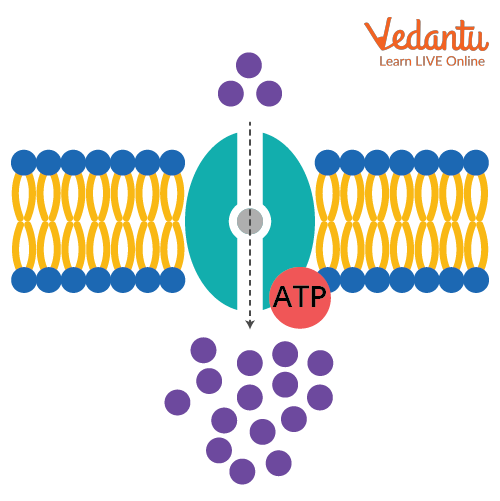




Transportation in Plants: Introduction
Transportation is the cycle that includes the movement of water and fundamental nutrients to all parts of the plant for survival. It is an imperative cycle in plants. Trees transport all supplements and water they need for endurance from their roots to the tips of their leaves.
Plants contain a complex organisation of tissues which comprises xylem and phloem. It is similar to the circulatory framework that transports blood through the human body. Like the circulatory framework in people, the xylem and phloem tissues stretch out throughout the plant. These leading tissues start from the roots and move up through the trunks of trees. Later, they branch off into the branches and then expand considerably further into each leaf, similar to spider webs.
Transportation happens on three levels on account of plants: (1)Transportation of a substance starts with one cell and then onto the next; (2) long distance transport of sap inside phloem and xylem and (3) the delivery and take-up of solute and water by individual cells.
What is the Meaning of Short Distance Transport in Plants?
Short distance transport is the method of membrane transport where the cell transports through no effort nor shows any extraordinary action. The transportation is based totally on the concentration gradient.
There are two types of transport: Active Transport and Passive Transport.
Passive transport is further of two types: Simple Diffusion and Facilitated Diffusion.
It is a type of cell-to-cell transport.
Entry or exit occurs from the cell.
Movement occurs within the cell.
It involves a few cells, generally in the lateral direction.
They are the associating connections to xylem and phloem from root hairs or leaf tissues individually.
Diffusion, imbibition, and osmosis are examples of short-distance transport in plants.
Little uncharged particles, like oxygen, carbon dioxide, and water, can diffuse across the plasma layer all alone.
Interestingly, particles and bigger atoms need the help of transport proteins because of their charge or size.
Transport across layers likewise happens inside individual cells, playing an assortment of the fundamental jobs for the plant.
Examples of Short Distance Transport in Plants
Simple diffusion
Facilitated diffusion
Active transport
Simple Diffusion
It is the process of interaction by which molecules of matter move from high concentration toward low concentration.
For instance, when a sugar shape is dropped in a glass of water the particles of sugar stir up in the water as they move from the higher concentration of sugar cube towards the lower concentration of water.
It is a slow and random process which doesn’t require any energy.
It only occurs for liquid and gases.
Simple diffusion is the only means of gaseous transport in plants.
Factors affecting simple diffusion are:
Concentration gradient
Pressure gradient
Temperature
Size of molecules

Simple Diffusion
Facilitated Diffusion
Facilitated diffusion is the passive movement of particles along the concentration gradient.
It is a selective process, i.e., the membrane permits only the selective ions and molecules to go through it.
It is a downhill movement of particles from high concentration to low concentration.
It prevents the movement of different particles from going through the layer.
Hydrophilic substances need a channel to move.
Channel proteins, gated channel proteins, and transporter proteins are three kinds of transport proteins that are associated with working with facilitated diffusion.
Channels are made up of protein and have some features like saturation, selective and inhibition.
Porin is a large-sized channel present on the outer membrane of mitochondria, plastid and some bacteria.

Facilitated Diffusion
Active Transport
Active transport is the movement of a substance from its lower to higher concentration.
It utilises energy in the form of ATP.
It is an uphill movement.
It occurs through pumps.
It is also selective, saturated and inhibitive.

Active Transport
Conclusion
The above article gives an insight into the short-distance transport in plants, various examples and types of short-distance transport. The transport is of two types i.e, active and passive transport. Active transport requires energy in the form of ATP and passive transport doesn’t require any energy molecule; it always occurs along the concentration gradient. Passive transport is further of two types which are simple diffusion and facilitated diffusion. These processes are very helpful in the plants to carry out the movement of water and nutrients to different parts of the plants.
FAQs on Short Distance Transport - NEET Important Topic
1. What are the most important topics in Short Distance Transport in Plants?
Frequently, questions about the use of energy occur, the kind of transport, and the major difference between simple diffusion and facilitated diffusion. Students must not get confused between the basic differences in these terms. They should pay attention to terms like uphill and downhill transport, Selective, Saturated, and Inhibitive meaning. Students are also required to pay attention to the data.
2. What are channels and transporters?
Channels are pore-forming membrane proteins which allow the movement of ions across the cell membrane, it is a passive mode of transfer and movement occurs always along the concentration gradient, whereas transporters are transmembrane proteins that utilise the energy in the form of ATP to carry out the transport, which always occurs against the concentration gradient. Types of transporters are- uniport, symport and antiport. Channels can be voltage-gated, ion-gated, or ligand-gated. Aquaporin acts as the channel for the transport of water across the membrane.










